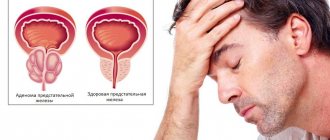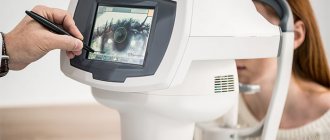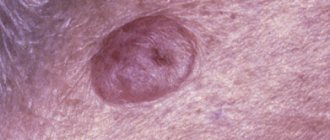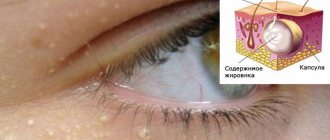Setton's nevus, otherwise called halonevus, is a skin lesion that is found in approximately 1% of the world's population and is a mole with a white border. Halonevus is a noncongenital anomaly; it forms more often at a young age without a clear dependence on gender.
Halonevus, a harmless mole
Many people are frightened by the white halo that forms around the mole, since such a sign is a manifestation of melanoma. But Setton's nevus is not a malignant tumor; its malignancy occurs extremely rarely under the influence of systematically influencing unfavorable factors.
Causes
Medicine cannot yet accurately answer the question of why halonevus appears, but it can identify conditions that contribute to its occurrence:
- People who suffer from vitiligo (a focal disorder of pigmentation) themselves, or who have close blood relatives with this disease, are more susceptible to the formation of halonevus.
- Presence of autoimmune diseases. This theory is supported by the discovery of antibodies to cells - melanocytes, which the body perceived as foreign bodies.
- Some researchers believe that Setton's nevus forms as a hypersensitive reaction to excessive ultraviolet radiation.
Signs of halonevus
Education is a combination of two factors:
- an ordinary mole of brown color with a reddish tint, moderately protruding above the surface of the body, with clear edges,
- a white spot around a mole, which has all the signs of vitiligo; it is discolored skin in which there are no melanocytes.
Nevi most often have an oval shape and multiple distribution; they practically never occur alone. The localization of halonevus varies: any part of the torso, arms, legs, but they rarely appear on the face.
Setton's nevus differs from ordinary moles by a light rim of discolored skin
How is the diagnosis made?
To determine whether treatment is needed in a particular case, you need to be examined by a doctor called a dermatologist. Such specialists work in oncology centers and dispensaries, and conduct consultations in private centers. Only they can distinguish halonevus from neurofibroma, pemphigus vulgaris, and most importantly, from the initial stage of melanoma (an extremely malignant formation of cells with pigment).
To do this, he uses the following methods:
- Dermatoscopy. A method that allows you to examine a neoplasm under high magnification, evaluate the structure of the nevus and the structure of the cells - to diagnose its malignancy. The study reveals an accumulation of melanocytes in the mole itself, a shaft of lymphocytes along the periphery of the nevus and the absence of melanocytes in the rim area.
- SIAScopy is a method recently developed by scientists at the University of Cambridge. The name is based on the abbreviation SIA, which stands for spectrophotometric intracutaneous (that is, intradermal) analysis. The method is based on the penetration of a light wave deep into the skin up to 2 mm, where light beams of different lengths will interact with melanin, collagen and hemoglobin. Using the SIAscope device, a three-dimensional multispectral image of the studied halonevus is received on the monitor, which allows you to evaluate its structure, color, and areas rich in melanin or hemoglobin. The probability that the SIAscope will “see” malignant cells (if any) inside Setton’s nevus is 96%.
- Examination of regional lymph nodes using ultrasound, and, if necessary, their biopsy. This way you can notice the presence of metastases in them, if it is not a halonevus, but a melanoma or other malignant neoplasm of the skin.
The possible cause of Setton's nevus is also being investigated. For this person, specialists such as a rheumatologist, endocrinologist, and medical geneticist examine.
Stages of development
In its development, halonevus goes through three stages, which is its distinctive feature:
- A pigment spot appears, from which a mole is formed. The nevus can remain in this state for about three months. Then a skin pattern is drawn on the mole, it protrudes slightly above the body, the skin around the formation may acquire a reddish tint.
- White spots around moles that appear in the second stage form gradually. After several months, having reached their final size, they are 2-3 times larger than the size of the mole itself. Galanevus does not cause discomfort and can remain on the body for several years, after which the third stage begins - spontaneous regression.
- In most cases, Sutton's nevus does not require treatment or mechanical removal as it disappears on its own. The process starts with the disappearance of the pigment spot, it turns pale, becomes smaller and disappears after a few months. But the white spot reminds of itself for a long time, sometimes it lingers for a year or more. Subsequently, the skin acquires its natural shade.
At the initial stage, a discolored spot appears, in which a mole later forms
What is the danger
Setton's nevus is a benign formation that is not prone to degeneration into melanoma. But there are some recommendations regarding such moles.
- Since a white rim of skin often appears with the formation of melanoma, you should definitely visit a doctor and make sure that the formation with a white rim is a halonevus.
- Multiple accumulations of Setton's nevi cause concern, as they can accompany the development of malignant processes within the body.
- Moles located in places subject to constant trauma or exposure to sunlight must be removed. This is the only case when the threat is posed by the nevus itself, which can degenerate with systematic irritation.
The greatest danger from the appearance of Sutton's nevi is in older people, when the immune system can fail in childhood. It is worth noting that in children the disappearance of nevi occurs much faster than in adults.
Dermatoscopy will show whether the formation is malignant
Who gets sick more often
A halonevus is a formation that is not present in a child from birth, but appears later - in children and people under 30 years of age. Both men and women suffer from it equally. All races are susceptible to the disease, and it affects 1% of the world's population.
People most susceptible to Setton's nevus are:
- who has vitiligo (patches of discolored skin) or immediately before its appearance: every fourth such person is sick;
- those suffering from autoimmune (when one’s own immune system attacks its own tissues) diseases: autoimmune thyroiditis, autoimmune hepatitis and others;
- siblings of a person who has vitiligo;
- living in stressful conditions;
- having sunburned skin;
- who have or have had melanoma;
- in women with Shereshevsky-Turner syndrome, who have short stature and underdeveloped genitals due to the fact that they have only 1 sex chromosome - X (X), and not XX, as it should be.
Setton's nevus in a child and adolescent is rarely single: more often than not, several such formations appear throughout the body (the maximum number of such formations has been 100 in one person).
Most of these diseases (autoimmune processes, stress, skin burns) also accompany vitiligo. However, Setton's nevus and vitiligo are different diseases with different causes, and not "vitiligo around the mole" as it is sometimes called.
Diagnostics and medical recommendations
Clinical manifestations and clear stages of development make it easy to diagnose the formation. However, in doubtful cases, when precise differentiation from melanoma is required, additional research is carried out.
Dermatoscopy is a method of thorough visual examination using a device with 20x magnification. Allows you to accurately determine structural changes in the skin and examine the halo around the mole.
Skiascopy is a non-invasive examination method that provides accurate data on the quantitative content of melanin, hemoglobin, and collagen in the nevus.
Biopsy is a tissue examination of a particle of formation, used when a malignant process is suspected.
If necessary, the attending physician may prescribe other laboratory and instrumental tests and refer you for a consultation with a dermatologist.
What can a doctor advise in case of a more precise diagnosis of halonevus:
- if the mole is located in a traumatic location, it may require excision using electrocoagulation or laser removal,
- the skin around the mole is very sensitive to ultraviolet radiation, so visiting a solarium is contraindicated and sun exposure is limited,
- before going outside in clear weather, apply sunscreen to the discolored area,
- The nevus cannot be covered with a band-aid; this will cause the skin to become wet and its integrity will be compromised.
Sunscreen will protect the stain from ultraviolet rays
What to do?
It is necessary to protect the halo nevus from exposure to the sun: lubricate it with sunscreen with maximum protection (SPF 50). By the way, SPF 50 means that the skin will receive 50 times less ultraviolet radiation than without any cream at all.
You cannot visit the solarium.
Obligatory observation by a dermatologist - once a year.
What if a child has Setton's nevus?
The tactics are the same:
- examination by a dermatologist
- differentiation from melanoma (performed by a dermatologist)
- observation or treatment depending on the final diagnosis.
Do I need to treat it and how?
No, treatment for halo nevus is not required. It is possible to apply foundation to hide a cosmetic defect if Setton's nevus is located on the head.
Army
They take it into the army if it is not combined with vitiligo.
When to sound the alarm
Despite its harmlessness, halonevus requires careful attention. In what cases is immediate consultation with a specialist required:
- The appearance of multiple halonevuses in childhood should be alarming, since, with a combination of certain unfavorable factors, they may indicate the development of neurofibromatosis. And the risk of developing this type of tumor in childhood is especially high.
- If in elderly people with a history of malignant neoplasms, a white spot appears around a mole, this is a reason to undergo a thorough examination.
- The occurrence of injuries and inflammatory processes within the white halo.
- Changes in the nevus itself: darkening, blurring of boundaries, increased growth, pain.
Setton's nevus is not a potentially malignant formation, but requires careful and careful treatment. Most often, the formation, having gone through all stages of development, disappears on its own.
But if a doctor suggests removing a mole, you should not hastily refuse; there are probably good reasons for such a decision.
Treatment and prognosis
Since Setton's nevus never turns into melanoma, if the disease is accurately diagnosed, treatment is not required.
The prognosis is favorable. Usually, after 2-4 years, independent (spontaneous) recovery is noted.
The use of a laser is contraindicated. Read a detailed article about laser removal.
Surgical removal is possible if Setton's nevus is constantly injured.
If it is impossible to differentiate between a halo-nevus and melanoma, a diagnosis of “Melanoma” is made and the formation is surgically removed. Removal is carried out within healthy skin, that is, with a small amount of healthy areas of skin.










